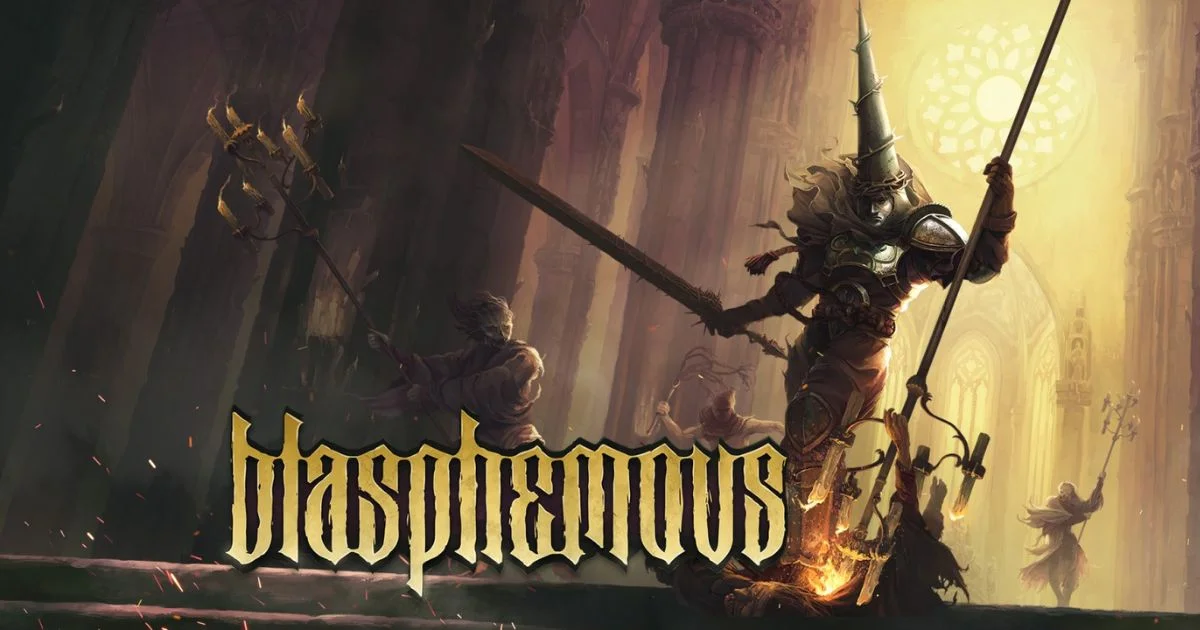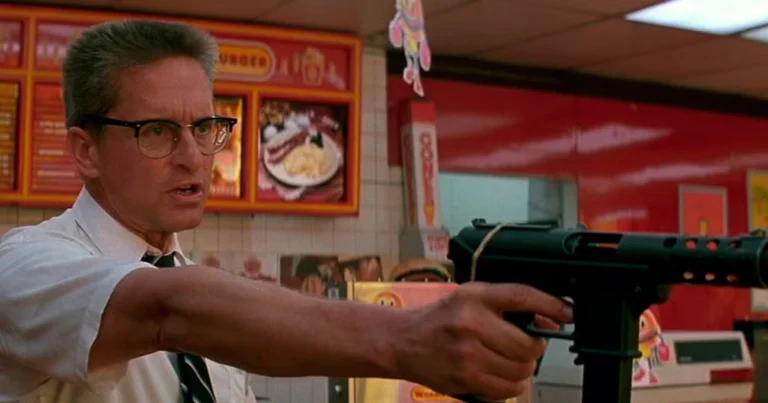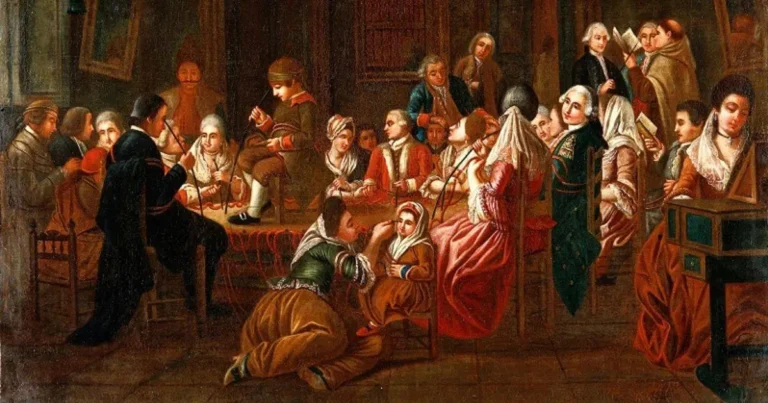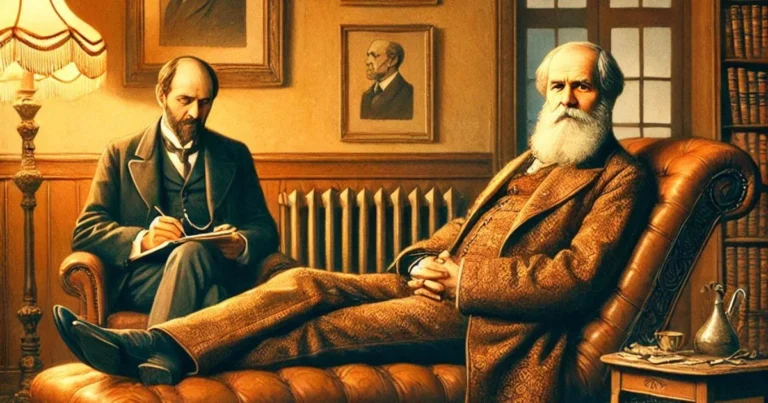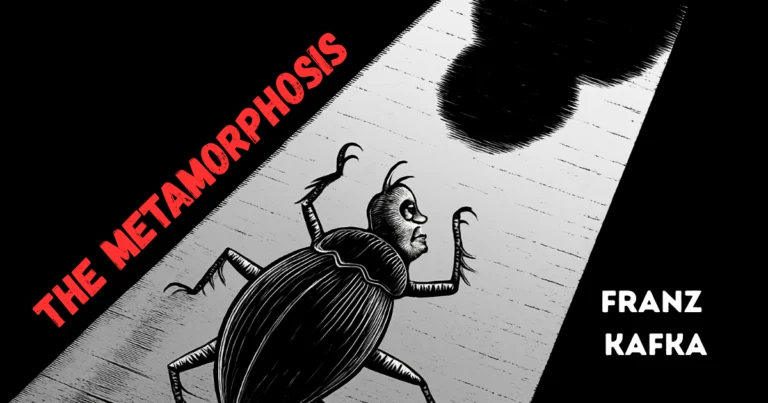Blasphemous: Clinical reflections on suffering and sacrifice
Blasphemous, developed by The Game Kitchen, transcends the typical metroidvania video game. It acts as a digital ex-voto, a baroque and twilight tapestry, a clinical descent into the depths of the human psyche. Its gothic world, drawn from the religious iconography of inquisitorial Spain, stages ritualized suffering. You embody The Penitent, a silent figure crowned with a conical iron helmet, evocative of medieval flagellants and sacrificial icons.
Beneath its blood‑soaked spires, distorted prayers, and tormented monsters, Blasphemous functions as an interactive metaphor for psychic pain, traumatic memory, and bodily repression. It speaks a symbolic language, a waking dream narrative steeped in post‑traumatic expression, where gesture, flesh, and emotion perpetually converse. This invites a multidisciplinary analysis, bridging psychopathology, psychomotricity, and sacred symbolism.
Shattered guilt: trauma as eternal atonement
From the outset, you confront an imagery-saturated realm: mutilated statues, fallen angels, deranged priests, and stillborn children. Custodia is not merely hostile, it’s in mourning. The narrative never spells itself out. It unfolds through whispered fragments, cryptic relics, and corrupted prayers, mirroring the fragmentation of post‑traumatic psyche.
Custodia operates like a fossilized memory imprint. Nothing truly changes, everything repeats. Blood dries but never vanishes. Each level is a visual and auditory flashback. Bells, moans, and ethereal voices mirror the symptoms of traumatic resurgence: the player relives an origin-shattering fall, often without clarity. Muted and affectless, The Penitent acts under a ritual armor, embodying the dissociated survivor whose movements shield their collapse. This aligns with typical figures of complex trauma: a body constantly in motion to stave off disintegration.
In this universe, suffering is duty, not consequence. Salvation does not await the player; purification through pain does. Here unfolds a melancholic psychodynamics in which the individual internalizes an undefined original fault, endlessly atoning. This echoes Freud’s concept of moral masochism: the subject finds fleeting peace in self-punishment.
Shattered body, frozen gestures: a psychomotor clinic of the sacred
From a psychomotor perspective, Blasphemous provides a rich framework for exploring the body, spatial engagement, gesture, and muscle tone under repression and pain. The Penitent’s body is constrained, ritualized. It doesn’t run, it advances ceremonially. It doesn’t strike, it performs sacrificial acts.
Gameplay demands precise, codified, sometimes slow movements, as if dictated by an external moral, divine, or societal law. Every gesture seems to be torn from painful immobility, resembling clinical presentations of psychomotor inhibition (e.g., severe depression, neurotic inhibition, or post‑traumatic tension).
Many creatures are mutilated or hybridized, limbless or grotesquely distorted, evoking primitive anxieties of bodily fragmentation found in psychosis and body-schema disorders. The body becomes a dispersed, exhibited sacrifice. Some enemies display abnormal postures or spasmodic movements that echo neurological or muscular tone pathologies.
Repetition is central: replaying, retrying, failing, persisting. Players repeat motor sequences like a psychomotor mantra. This suspended, ritualized time evokes therapeutic structures where repeated movement, through symbolic play, modeling, or drawing, helps re‑integrate the body and ease internal tension.
The Penitent never receives a reward. Progress comes through suffering. This bleak faith mirrors psychic configurations of perverse submission to all‑powerful authority, where the subject abandons personal desire and submerges into the will of the Other (parent, society…). Pleasure is absent, or displaced to pain. Lacan’s concept of jouissance is embodied in blood, sacrifice, and loss. Flesh is burned to be sanctified. The body is simultaneously offering and atonement.
Women in the game often represent thwarted, deathly, or sacrificial motherhood, symbolizing a devastated maternal function central to early relational pathologies. Womanhood becomes debt, guilt, and silence.
From gameplay to healing: the psychomotor bridge
As a medium, Blasphemous serves as a powerful projective canvas. It speaks to the body and unconscious, to emotion and intellect, making it valuable for therapeutic or educational use:
- Identification surface for suffering patients: The Penitent resonates with those silenced by shame, exclusion, or chronic pain, becoming an avatar for their experiences.
- Mediation through bodily gesture: Exploring the Penitent’s slow, rigid, tragic gestures can launch conversation on bodily sensation, pain, and inhibited movement. In psychomotricity, this game can spark expressive or bodily exploration, under guidance.
- Symbolic language to access the unspoken: The game’s dreamlike, religious, distorted imagery forms an associative reservoir, enabling metaphorical engagement with taboo themes, death, violence, guilt.
An interactive purgatory: reflecting the human psyche
Blasphemous isn’t merely a game, it’s a ritualistic, clinical, aesthetic experience. It mobilizes emotion, representation, bodily tension, and archaic beliefs to immerse players into the structure of human suffering. It reaches the psyche’s silent realms, where language falters, where the body speaks, where symbol trembles.
This is a work that questions our relationship with evil, pain, faith, the body, and redemption. A sacred outlet for modern damned souls. A video‑game pilgrimage to the wounded psyche. Perhaps, ultimately, Blasphemous isn’t played, it confesses.
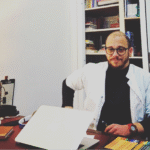
Saad Chraibi
Psychomotor Therapist
• A graduate of Mohammed VI University in Casablanca, currently practicing independently in a private clinic based in Casablanca, Morocco.
• Embraces a holistic and integrative approach that addresses the physical, psychological, emotional, and relational dimensions of each individual.
• Former medical student with four years of training, bringing a solid biomedical background and clinical rigor to his psychomotor practice.
• Holds diverse professional experience across associative organizations and private practice, with extensive interdisciplinary collaboration involving speech therapists, psychologists, neuropsychologists, and other healthcare professionals.
• Specializes in tailoring therapeutic interventions to a wide range of profiles, with a strong focus on network-based, collaborative care.
• Deeply committed to developing personalized therapeutic plans grounded in thorough assessments, respecting each patient’s unique history, pace, and potential, across all age groups.

